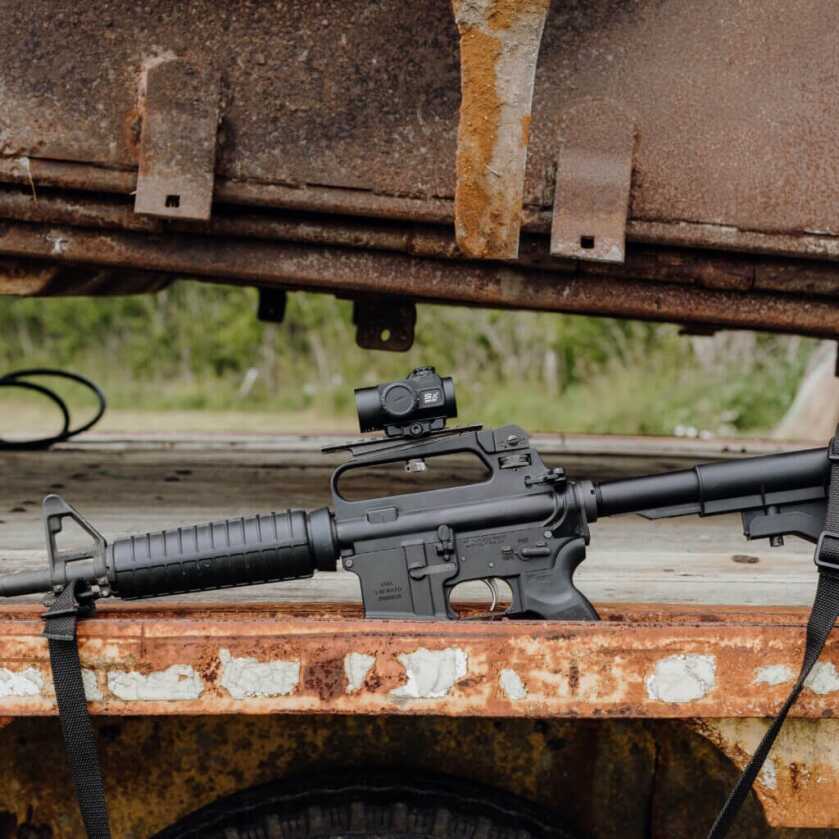
Estimated reading time: 15 minutes
No matter what the latest high-end AR-15 rifle is or how built up an influencer’s Recce setup is, retro rifle builds are just cool.
The classic look of previous generation rifles from years past has made an epic resurgence in recent times, with many opting to build their next range showpiece with great retro flare. Even better, there seems to be a retro rifle for every user’s preference.
Table of contents
- M16A1/A2/A3/A4
- A Simple Retro Build
- No Upper Needed
- M16A2 Differences
- M16A3
- M16A4
- The Gordon Carbine/Delta Carbine
- Hard-To-Find Retro Components
- Versatile Retro Rifle
- CAR-15 XM177/Commando
- Start Lower, Work Your Way Up
- Register Your Retro Rifle
- GAU-5
- M4A1 Block 1
- Cloning Retro Guns
- M4A1 Barrel Length
- Conclusion On Retro Builds
Regardless of whether you want to have a purpose-built rifle, a fun range gun, or are just interested in old-school AR platform rifles, there are A LOT of different configurations from over the years. So, what are some of the most popular configurations? Well, get ready, because we’re covering some of the most popular retro rifle models and setups.
M16A1/A2/A3/A4
Starting with the tried-and-true classic, the M16A1 was the standard-issue rifle that replaced the M14 in service for the U.S. Military, and it was the first standard-issue rifle based on the Armalite AR-15 rifle. The M16 would be used in combat in many parts of the world, with later derivatives being used in service in some capacity from 1964 onward.

The need for a new rifle arose when the Soldiers issued with M14 rifles found them to be uncontrollable when shot in full auto. While Soldiers with the M2 Carbine could more easily control the rifle in full-auto, they were outclassed ballistically by the AK-47 which hit harder and was easily controlled during full-auto fire.
Enter the M16A1, the scaled-down version of the .308/7.62 NATO chambered AR-10. This rifle would become the basis for almost every subsequent standard-issue rifle for the U.S. Military.
A Simple Retro Build
For the M16A1, it is a very simple rifle build. Starting at the lower, it uses a mil-spec AR-15 lower with an A1 style pistol grip, and an M16 style stock. For the lower receiver itself, many manufacturers sell “clone correct” lowers that have the same markings as the original M16 rifles. While it isn’t necessary to build the rifle, it can tie the whole look together; It never hurts to add style points.
While the stock is very similar to the common A2 stock, the A1 stock is lighter, shorter, and has no trapdoor built into the rear buttpad for storing a cleaning kit. The upper receiver of the rifle is built with an A1 style fixed carry handle upper receiver that has a teardrop forward assist.
Available on GunsAmerica Now
No Upper Needed
You won’t need to use an A1 upper receiver for most other clone builds, and don’t necessarily need one for this rifle. However, if you want to have a clone correct M16A1 you will need to use one. Functionally, they are almost identical to the A2 fixed upper receiver. The main difference between them is the sight integrated into the carry handle. While the A2 sight is a separate unit that mounts on the back of the carry handle, the A1 sight is integrated into the carry handle. Also, A1 sights can only be adjusted for windage while A2 sights can adjust for windage and elevation. It’s up to you as to which you go with, but it’s important to know the difference between the two upper and sight types.
The barrel of the M16A1 is a 20-inch pencil profile barrel with a rifle-length gas system, fixed front post sight, and either a three-prong or birdcage muzzle device. Unlike modern AR rifles, the handguard is a plastic triangular one that can be found in proper lengths from manufacturers like Luth-AR.
Once assembled, you have a complete replica of the M16A1, but what about other M16 models? What are the differences between them?
M16A2 Differences
M16A2 rifles were like the A1 but had many upgrades to the platform. Starting with the receiver, instead of having an “auto” selection for fully automatic firing, the A2 featured a “burst” selection. This would allow the rifle to be operated with a 3-round burst function instead of full-auto.
Besides a receiver change, to make it clone correct, the M16A2 also switched to the A2 stock, A2 clam shell handguard, and a round forward assist plunger. This fixed stock is very common and features a trap door for cleaning supplies and is slightly longer than the A1. The handguard is a two-piece clamshell design that can be easily removed if needed.
M16A3
The M16A3 is a special case. The only fundamental difference from the A2 is that it went back to having a full-auto function instead of a burst. Other than that, there really isn’t much difference between them. The A3 wasn’t manufactured in large numbers and was instead used as a specialty rifle for special forces units. It doesn’t usually get cloned too often, but clone correct receivers are available for those looking to clone this rifle.
M16A4
The M16A4 is one of the most common clone rifles, as it was one of the most widely produced variants of the M16 platform. This variant of the M16 was the first to include an upper receiver with a picatinny top rail and a removable carry handle. This allowed more versatility with optics while keeping the handling of the previous model M16s.
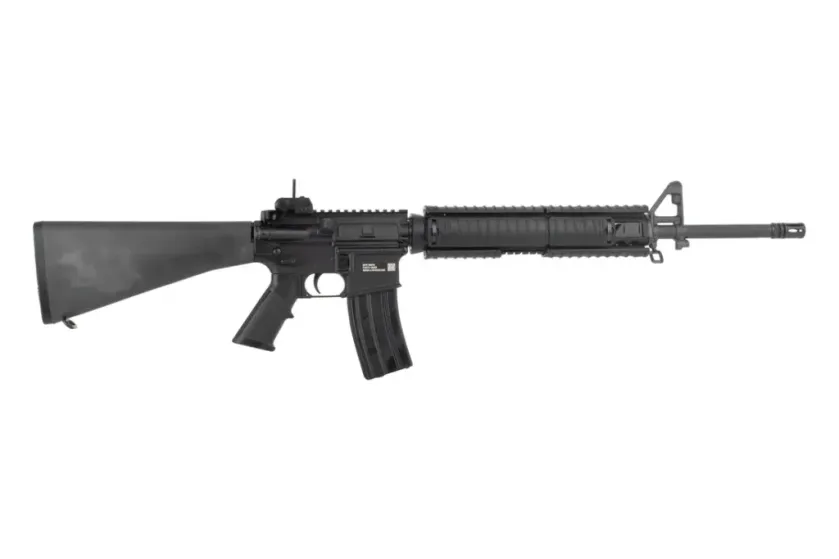
Many of the first M16A4 rifles were issued with the standard clam shell, A2 style handguards, but later models would come with the full-length RAS quad rail from Knight’s Armament Company, or R&S Products in some cases. While it still uses the A2 stock, this rifle saw more variety in its configurations, with the common military configuration including a Trijicon ACOG and broom handle vertical foregrip (also from Knight’s Armament). Additionally, the A4 was produced in two configurations, one that had a full-auto selection, and one that had a 3-round burst selection.
With M16A4 being one of the most popular variants of the M16, many retailers online have most of the parts necessary to build a clone of the A4. If you want an M16A4 clone but don’t want to build it, you’re in luck because companies like FN Herstal have a military collector’s line of AR-15 rifles, and one option available is a replica of the M16A4 complete with the KAC RAS quad rail and vertical foregrip. If you’re looking to build a clone with an RAS quad rail, the M5 RAS from Expo Arms is an aesthetic clone of the KAC and P&S handguards but is substantially more affordable.
The Gordon Carbine/Delta Carbine
Perhaps one of the most prolific and utilitarian retro rifle setups, the Gordon Carbine is based on the rifle used by U.S. Army Master Sergeant Gary Gordon, during Operation Gothic Serpent in 1993. The carbine was heavily popularized because of its portrayal in the movie Black Hawk Down, where it was shown alongside the brave sacrifice of Gary Gordon, who would posthumously receive a Medal of Honor for his service.
Gordon’s rifle was very unique for his unit. Whereas the majority of his team used a variation of the Delta Carbine, Gordon altered his rifle, giving it a 12.5-inch barrel instead of the 14.5-inch barrel that most other operators used. Both the Gordon and Delta Carbine are built the same; the fundamental difference is the barrel length.
This rifle uses a mil-spec lower receiver with the standard A2 pistol grip and a CAR-15 style stock. The upper receiver is built from an A2 style fixed carry handle upper. The Gordon carbine needs to be a 12.5-inch barrel with a fixed A2 front sight gas block and an Allen Arms Engineering two-piece muzzle brake and collar.
Hard-To-Find Retro Components
Like most older components, the original muzzle devices for either carbine can be difficult to find. Fortunately, Centurion Arms makes an identical brake and collar muzzle device that both looks and functions identically to the original. If you plan on acquiring an Allen AEM5 suppressor to maintain the proper look of the carbine, it will mount up perfectly with the Centurion Arms brake and collar device.
As for an optic, it hasn’t been confirmed which optic Gordon used when in service, but based on photos of other members of his unit, it’s likely that he used either an Aimpoint Model 3000 or 5000. For a more modern optic, the Aimpoint PRO and Aimpoint 9000 both look the part and are overall better optics since they have better glass clarity, longer battery life, and are more durable.
He also has a Surefire model 660 weapon light attached by a weaver mount or simply with fabric tape. There aren’t many 1-inch diameter weapon lights available, but many recreators of the rifle use a modern Surefire scout light. Another common workaround is to use a new production 1-inch light body. This gives you the look of the old-school lights while keeping the performance of modern ones. Lastly, it was camouflaged with tan and green paint.
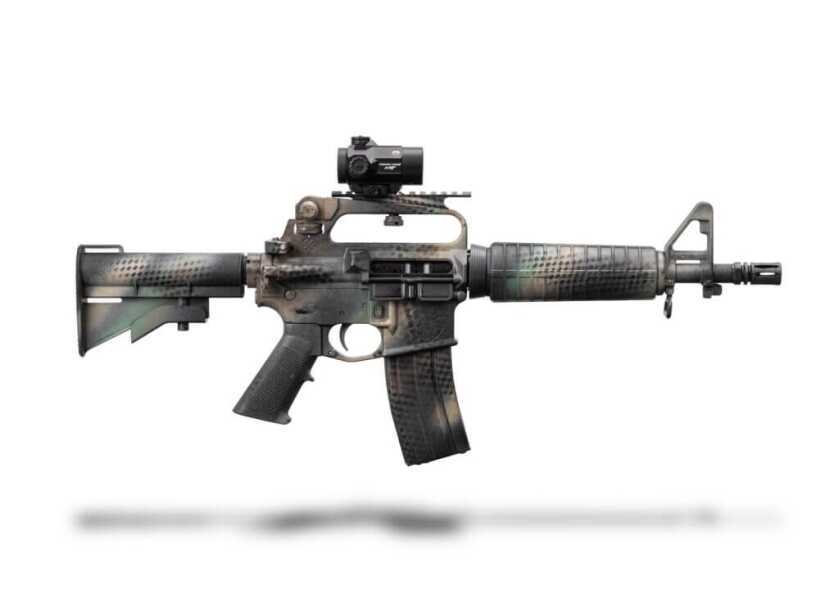
Versatile Retro Rifle
Regardless of whether you want to opt for the Gordon or the Delta Carbine, it is an incredibly versatile rifle. Keep this in mind, however, if you plan on building a true Gordon carbine, unless you pin and weld a faux suppressor on the muzzle of the firearm, it will be an SBR. As such, you will need to follow all applicable federal and state laws and regulations, including filing for a tax stamp. Keep in mind that some states have outright banned SBRs, so be sure to do your research to be sure the rifle you’re going to build is legal.
The Delta Carbine is the easiest to build without a tax stamp. By using a 14.5-inch barrel, it’s much easier to have the muzzle device pinned and welded to the barrel, bringing it to a final length of 16 inches. Also, if you want to buy instead of build, some companies replicate the Gordon Carbine, one of which being BG Defense; they have both the Gordon and Delta Carbine available as part of their “Resto-Mod” series of rifles.
CAR-15 XM177/Commando
The CAR-15 is one of the classics. Used in Vietnam by U.S. Navy Seals and Army Special Forces units, the XM177 or Commando Rifle, as it is often referred to, would be used and modified for different scenarios for years to come.
The XM177 became a popular rifle to clone because of how it was featured in movies and documentaries about the Vietnam War. An extension of the CAR-15, the Colt 733, was used in the now famous shootout scene in the movie Heat; a modified version of the XM177 that shares a close resemblance to the Gordon Carbine was also featured in the popular movie Blood Diamond (we’ll talk about both movie rifles later).
There are 2 main versions of the CAR-15 XM177: the XM177e1 and the XM177e2. The only difference between the two is that the e1 has a 10.5-inch barrel, and the e2 has an 11.5-inch barrel.
Start Lower, Work Your Way Up
Building a clone of this rifle starts with the lower. It is a basic A1 style mil-spec with standard controls. It differs from most modern AR-15 builds in the buffer tube and stock assembly, though. Instead of a six-position buffer tube with a polymer stock, it utilizes a 2-position buffer tube and an aluminum carbine stock reminiscent of the one used on the Delta Carbine. The upper is built off an A1 style fixed upper receiver and uses either a 10.5-inch or 11.5-inch carbine length barrel and a fixed front sight gas block.
Like most older AR-type rifles, it uses a clamshell handguard, but instead of a polymer one, it uses a sturdier, albeit heavier, aluminum one. CAR-15 muzzle devices are a bit different from most modern muzzle devices as well. Essentially, it’s just a longer birdcage-style muzzle brake. Usually, this muzzle device is about 3.5 inches long, but longer 4.3-inch muzzle devices were used as well on later production models.
This old-school rifle has a timeless look and is still durable enough to withstand use today when built correctly, so it’s no wonder why these became popular amongst cloners. Pair this with its expert usage amongst U.S. Armed Service Members in the Vietnam War, and it’s a great throwback to older and simpler rifle designs—plus it’s one of the easiest rifles to clone.
No additional modification like spray paint is necessary to match the look of the XM177. While it was sometimes modified in the field with quick camo paint schemes or with lights and optics, the rifles were shipped out with soldiers in their base configuration most of the time.
Register Your Retro Rifle
Cloning this rifle means you will need to get an ATF tax stamp to register your rifle as an SBR since the XM177 uses either a 10.5-inch or 11.5-inch barrel. Keep in mind, you can find CAR-15 muzzle devices that are 4.5 and 5 inches long; so, if you were to opt for the 11.5-inch barrel and use one of the longer muzzle devices, it could be pinned and welded to make it a 16-inch rifle.
Moving on to the movie clones, the Heat Colt 733 is built the same way as the XM177e2 with one key difference. Instead of using the CAR-15 style muzzle device, the one used in Heat had a standard A2 birdcage muzzle device. Besides that, they were built the same. Something to note if you want to clone this build: since it uses an A2 birdcage muzzle device, it will need to be registered as an SBR since the muzzle device isn’t long enough to be pinned and welded.
If you want to build a clone of the Blood Diamond CAR-15, it’s easy to replicate. Essentially, this rifle blends the look of the Gordon Carbine, with the build of an XM177e1. Like the Gordon and Delta Carbines, it had an Aimpoint PRO red dot sight and what appears to be a scout light on a weaver mount. Once assembled, it’s painted similarly to the Gordon Carbine with tan and green spray paint, albeit with more random patterns. Just like for the Gordon/Delta Carbines, BG Defense offers this rifle in its movie configuration as part of their “Resto-Mod” line of rifles.
GAU-5
The GAU-5 is essentially the same as the CAR-15/XM177 rifle. Adopted by the Air Force, the only major change made to the rifle was the barrel length.
Whereas the standard CAR-15 had either a 10.5 or 11.5-inch barrel, the GAU-5 had a 14.5-inch barrel length. It was optimized for use with the newer M855 cartridges that were introduced at the time. Other than the barrel length change, the construction of the GAU-5 uses the same components as the CAR-15/XM177.
M4A1 Block 1
Easily one of the most recognizable rifles in service today, the M4/M4 Carbine is a rifle chambered in 5.56x45mm and has been in use since its implementation in 1994. Not only did this rifle replace the M16 as the standard-issue rifle for the Army and Marines, but its success and design have led over 60 different countries to adopt it as their standard-issue rifle.
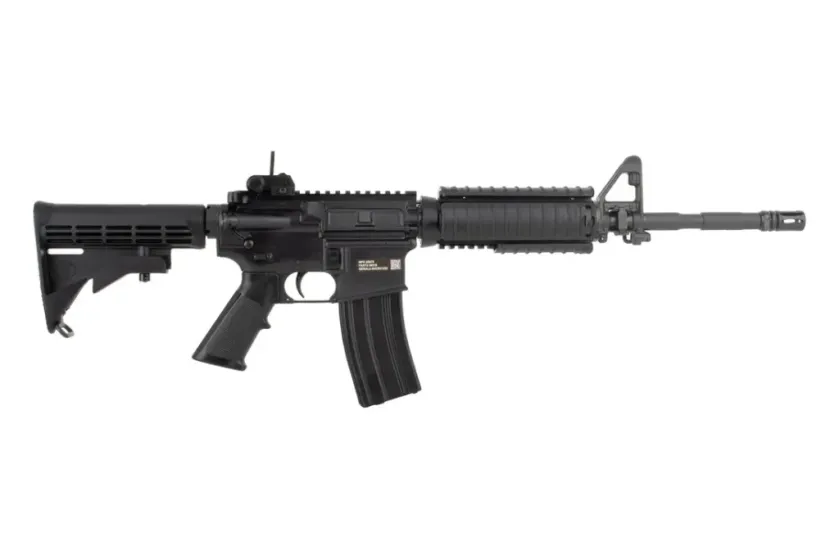
The M4 was developed in the 1980s, as a need for a shorter rifle variant was necessary. While the M16 was a great rifle, the 20-inch barrel made it tough to navigate in confined spaces like urban environments. Shorter carbines were implemented before, like the CAR-15, but with their shorter 10 to 12-inch barrels, they had major drops in terminal velocity and ballistic coefficient. By shortening the rifle length M16 to have a 14.5-inch or 16-inch barrel, the rifle would be lighter and smaller while also having effective terminal ballistics. Thus, the M4 was created.
Cloning Retro Guns
Cloning the M4A1 seems easy but can be difficult since there are so many examples of the M4 in service, so for this build, we’re going to focus on the M4A1 Block 1. The M4 Block 1 was the first implementation of the Military’s SOPMOD accessory system. It featured a 14.5-inch barrel with a carbine length gas system and a fixed A2 style front post. Just like for the previous rifle models, many manufacturers make a clone correct lower for the M4A1 with proper markings.
These rifles use either CAR-15 style stock, mil-spec M4 style stock, or a SOPMOD stock like those from B5 systems. Like the M16A4, the M4 Block 1 uses a carbine-length Knights Armament Company RAS Quad Rail, but remember that you can also use the Expo Arms M4 RAS if you want to save a bit. As with the M16A4, Knights Armament vertical foregrips were commonly used on these rifles as well.
For the optic, it was common for service members to use Trijicon ACOG sights, Aimpoint CompM2/CompM4 red dot sights, or EOTech 553 Holographic sights on their rifles. Though they aren’t necessary to make your rifle a clone correct build, they can help tie the look of the rifle together because of their common use.
M4A1 Barrel Length
Just like for the Gordon Carbine and CAR-15, the M4A1 has a barrel length that is less than 16 inches. The 14.5-inch barrel isn’t entirely necessary to build a clone of the M4A1, but most will opt for the 14.5-inch barrel. It will need to be either registered as an SBR with a federal tax stamp, or you can have its muzzle device pinned and welded to bring the overall barrel length to 16 inches.
In this case, more often than not, manufacturers that sell complete rifles or uppers for clone builds like the M4A1 will already have the muzzle device pinned and welded. Take note that the standard A2 birdcage is not long enough to pin and weld to a 14.5 barrel. There are longer birdcage muzzle devices available, like the BCM A2X, that keep the look of the traditional muzzle device while making your rifle 16 inches. Using one of these or a Knights Armament NT4 Flash hider will extend the barrel’s total length to 16 inches.
Conclusion On Retro Builds
Cloning rifles is a fun way to add some variety to your arsenal of range goodies. With the rich history of the rifles mentioned, each has a unique story behind it and will certainly be a fun talking point when at the range.
If you’re itching for a new rifle setup but don’t know what to choose, we highly recommend starting a retro rifle build. Versatile, durable, timeless, and fun, they are always an excellent option.
*** Buy and Sell on GunsAmerica! ***

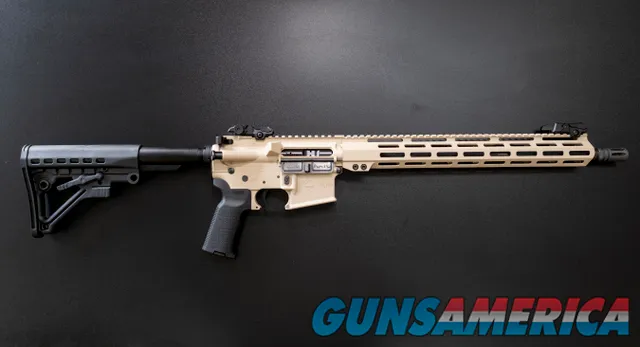


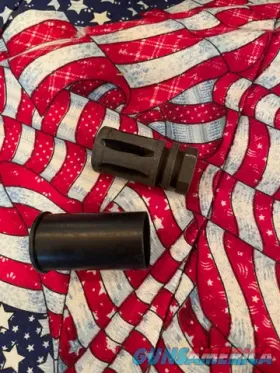
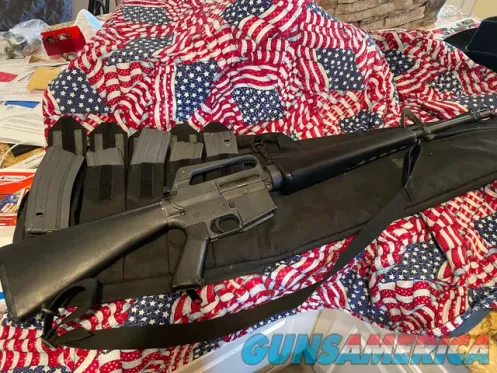

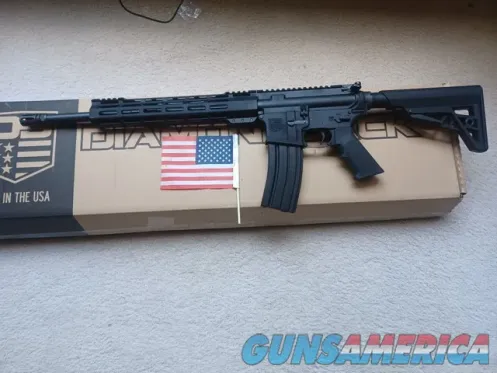
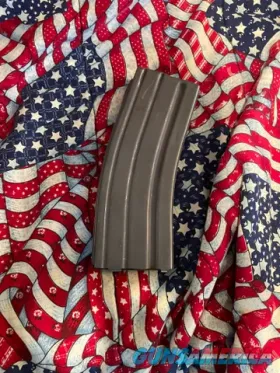
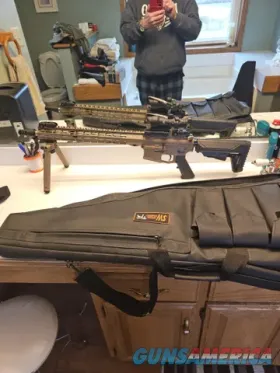
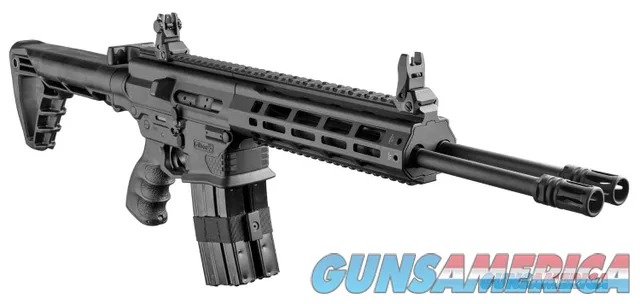
This article helps me understand the products better, from features to pros and cons, helping geometry dash deadlocked make smarter and more suitable shopping decisions for myself.
Recently I read an article about AR-15 scopes. It’s about rifle scope or dot sight, which one is more suitable for AR-15. But I was still confused about that. This is the article. https://www.cvlife.com/blogs/news/red-dot-sights-vs-rifle-scope-what-s-the-best-for-ar-16
This article made me realize that my Garand might be 84 years old, but the AR15 I built a long time ago as a close copy to the GI issue in the 60’s, is based on a rifle whose design is over 64 years old. It is still a good performer, but after firing one my son built, I built a newer one for 7.62X39 ammo like his, and actually like shooting it more than the 5.56.
A1 stocks were made with and without trapdoor storage compartments depending on vintage.